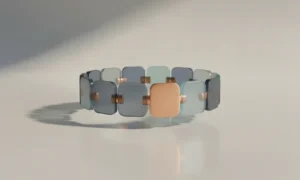Access to clean water is a fundamental human right. Yet, millions worldwide still struggle with water scarcity and contamination. Fortunately, technological advancements offer hope. Innovative water technologies are emerging to address these challenges. They promise to change the way we manage, distribute, and purify water. In this article, we’ll explore ten groundbreaking water technologies set to revolutionize the future of clean water.
Solar-Powered Water Purification
Solar-powered water purification is gaining traction as a sustainable solution. This technology uses solar energy to drive water purification processes. It is particularly effective in remote areas where electricity is scarce. One popular method is solar distillation. It involves evaporating water using solar heat and then condensing the vapor into clean water. Another method is photovoltaic-powered reverse osmosis. This technique uses solar panels to power reverse osmosis systems, removing contaminants from water. Solar-powered water purification offers a renewable, eco-friendly solution to water scarcity.
Atmospheric Water Generators
Atmospheric water generators (AWGs) extract moisture from the air and convert it into drinkable water. These devices use a combination of cooling and condensation to capture humidity. AWGs are particularly useful in arid regions where groundwater is scarce. They can produce a significant amount of water daily. Recent advancements have made AWGs more efficient and affordable. With further improvements, they could become a vital tool in addressing global water shortages.
Graphene-Based Filtration
Graphene, a single layer of carbon atoms, has exceptional filtration properties. Researchers have developed graphene-based filters capable of removing contaminants at the molecular level. These filters can effectively remove heavy metals, bacteria, and even viruses from water. Graphene’s high surface area and permeability make it an ideal material for water purification. This technology promises to deliver clean water more efficiently and with lower energy consumption than traditional methods.
Desalination Innovations
Desalination has long been used to convert seawater into freshwater. However, traditional desalination methods are energy-intensive and expensive. Recent innovations aim to make desalination more sustainable and cost-effective. One such innovation is forward osmosis. This process uses natural osmosis to draw freshwater from seawater through a semi-permeable membrane. It requires less energy than reverse osmosis. Another promising technology is the use of solar-thermal energy to power desalination plants. These innovations could make desalination a more viable solution for regions with limited freshwater resources.
Water Recycling Systems
Water recycling systems are essential for sustainable water management. They treat and reuse wastewater, reducing the demand for freshwater. Greywater recycling systems, for instance, treat water from showers, sinks, and washing machines for reuse in irrigation and toilet flushing. Blackwater recycling systems treat sewage to a higher standard, making it suitable for non-potable uses. Advanced water recycling technologies can even produce potable water from wastewater. These systems are crucial for reducing water consumption and addressing water scarcity.
Smart Water Grids
Smart water grids integrate digital technology with traditional water infrastructure. They use sensors, data analytics, and automation to optimize water distribution and management. Smart water grids can detect leaks, monitor water quality, and manage demand in real-time. This technology improves the efficiency and reliability of water supply systems. By reducing water loss and ensuring better resource management, smart water grids can significantly enhance water sustainability.
Biodegradable Water Bottles
Plastic pollution is a major environmental issue. Biodegradable water bottles offer a sustainable alternative. These bottles are made from materials that break down naturally, such as plant-based plastics. Unlike conventional plastic bottles, they decompose quickly, reducing environmental impact. Some biodegradable bottles are also designed to be edible. They provide a zero-waste solution to hydration. As awareness of plastic pollution grows, biodegradable water bottles could become more popular and widely adopted.
Water Footprint Calculators
Understanding and managing water consumption is crucial for sustainability. Water footprint calculators help individuals and organizations measure their water usage. These tools analyze water use across various activities, from household chores to industrial processes. They provide insights into how water consumption can be reduced. By raising awareness and promoting efficient water use, water footprint calculators play a vital role in water conservation efforts.
Portable Water Purifiers
Portable water purifiers are essential for emergency situations and outdoor activities. These devices can quickly purify water from various sources, making it safe to drink. They use different methods, such as UV light, filtration, and chemical treatments, to remove contaminants. Recent advancements have made portable water purifiers more compact, lightweight, and efficient. They are a valuable tool for ensuring access to clean water in challenging environments.
Hydroponic Systems
Hydroponic systems offer a water-efficient method of agriculture. They grow plants without soil, using nutrient-rich water solutions. Hydroponics requires significantly less water than traditional farming methods. It recirculates water, minimizing waste. This technology is particularly beneficial in areas with limited water resources. Hydroponic systems can also be used in urban settings, reducing the need for long-distance food transport. As the global population grows, hydroponics will become increasingly important for food and water security.
Conclusion
Innovative water technologies hold the key to a sustainable future. They address the challenges of water scarcity and contamination in diverse ways. From solar-powered purification to hydroponic systems, these advancements offer hope for a world where clean water is accessible to all. By embracing and investing in these technologies, we can ensure a healthier, more sustainable future for generations to come.

































